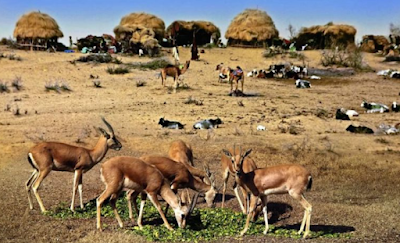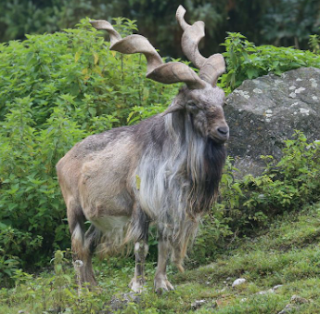A wildlife sanctuary is a protected area of land or water that is set aside specifically for the conservation and protection of wildlife and their habitats. These areas can be created by governments, non-governmental organizations, or private individuals and organizations.
Wildlife sanctuaries typically have strict regulations on human activities, such as hunting, fishing, and logging, in order to minimize disturbance to the animals and their habitats. They may also have designated trails or areas for visitors to observe wildlife in their natural habitats, with the goal of promoting education and appreciation for these species.
Major Wildlife Sanctuaries in Pakistan
There are several wildlife sanctuaries in Pakistan, and here are
some of the major ones:
- Manshi Wildlife Sanctuary
- Astor Wildlife Sanctuary
- Baltistan Wildlife Sanctuary
- Bajwat Wildlife Sanctuary
- Chashma and Taunsa Barrage Dolphin Sanctuary
- Cholistan Wildlife Sanctuary
- Hub Dam Wildlife Sanctuary
- Mahal Kohistan Wildlife Sanctuary
- Naltar Wildlife Sanctuary
- Nara Desert Wildlife Sanctuary
- Lake Haleji Wildlife Sanctuary
- Manglot Wildlife National Park
These sanctuaries are important for protecting the natural habitats
of wildlife in Pakistan, including a variety of species of plants and animals.
By conserving these habitats, we can help to ensure the survival of these
species and prevent their extinction.
| Wildlife Sanctuaries in Pakistan |
Location |
Area |
Established in Year |
|---|---|---|---|
| Manshi Wildlife Sanctuary |
Khagan Valley |
2,321 ha |
1977 |
| Astor Wildlife Sanctuary |
The catchment area of Astore Nala |
41,472 ha |
1975 |
| Baltistan Wildlife Sanctuary |
Baltistan District |
41,500 ha |
1975 |
| Bajwat Wildlife Sanctuary |
Sialkot District |
5,400 ha |
– |
| Chashma and Taunsa Barrage Dolphin Sanctuary |
Mianwali District |
– |
1972 |
| Cholistan Wildlife Sanctuary |
Cholistan, Punjab |
467,500 ha |
– |
| Hub Dam Wildlife Sanctuary |
Balochistan, Sindh |
27,219 ha |
1981 |
| Mahal Kohistan Wildlife Sanctuary |
Jamshoro District, Sindh |
70,577 ha |
1972 |
| Naltar Wildlife Sanctuary |
Naltar valley, Gilgit Baltistan |
27,206 ha |
1975 |
| Nara Desert Wildlife Sanctuary |
Mirpurkhas District, Sindh |
630,000 ha |
1980 |
| Lake Haleji Wildlife Sanctuary |
Thatta District, Sindh |
658 ha |
1977 |
| Manglot Wildlife National Park |
KPK, Pakistan |
710.628 ha |
1990 |
Importance of
Wildlife Sanctuaries
Here are some key points that explain the importance of wildlife
sanctuaries:
Biodiversity
conservation: Wildlife sanctuaries are essential
for preserving biodiversity, which refers to the variety of plant and animal
species in a given area. Wildlife sanctuaries provide a safe haven for
endangered and threatened species that might otherwise become extinct due to
human activities, such as habitat destruction, poaching, and climate change.
Overall, wildlife sanctuaries play a critical role in conserving
biodiversity, protecting habitats, promoting scientific research, educating the
public, and providing economic benefits to local communities. By preserving
these natural areas, we can ensure that future generations will have the
opportunity to experience and appreciate the incredible diversity of wildlife
that exists on our planet.
 |
| Cholistan Wildlife Sanctuary |
Protection of Endangered Species
The protection of endangered species is a critical issue, and there
are several measures that can be taken to protect these species from further
harm and prevent their extinction. Here are a few key ways to protect
endangered species:
- Habitat Conservation
- Wildlife Laws and Regulations
- Captive Breeding and Reintroduction Programs
- International Agreements and Treaties
- Public Education and Awareness
Conservation of Biodiversity
Biodiversity is essential for the functioning of ecosystems and for
human well-being. Biodiversity provides a range of ecosystem services,
including nutrient cycling, pollination, and climate regulation.
- Threats to biodiversity come from a range of sources, including habitat loss, climate change, overexploitation of natural resources, pollution, and invasive species.
- Conservation efforts must be based on scientific research and a thorough understanding of the ecology of the species and ecosystems involved.
- Protected areas, such as national parks and wildlife reserves, are an important tool for conserving biodiversity. These areas can provide a safe haven for endangered species and help to preserve the natural habitats they depend on.
- In addition to protected areas, conservation efforts should focus on the sustainable management of natural resources, including forestry, agriculture, and fisheries.
- International cooperation is essential for conserving biodiversity, as many species and ecosystems cross national borders. International agreements, such as the Convention on Biological Diversity, can help to coordinate conservation efforts and promote global biodiversity conservation.
- Public education and awareness campaigns can help to raise awareness about the importance of biodiversity conservation and encourage individuals to take action to protect biodiversity in their local communities.
- Finally, conserving biodiversity requires a long-term commitment and sustained effort from individuals, governments, and organizations around the world.








No comments:
Post a Comment